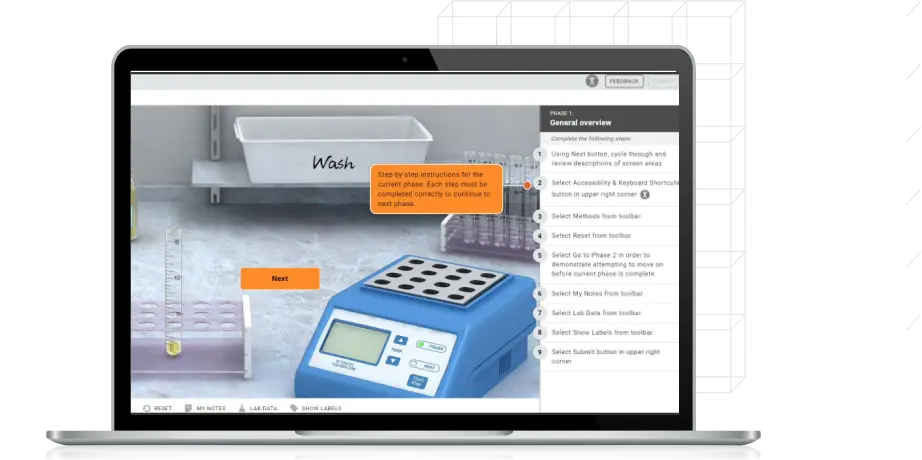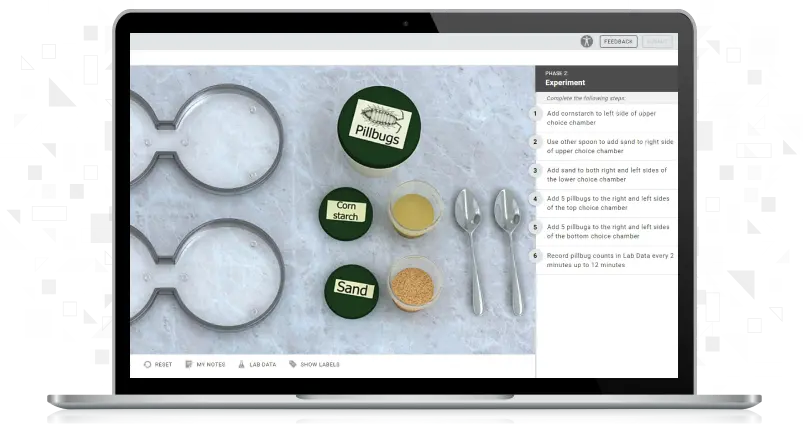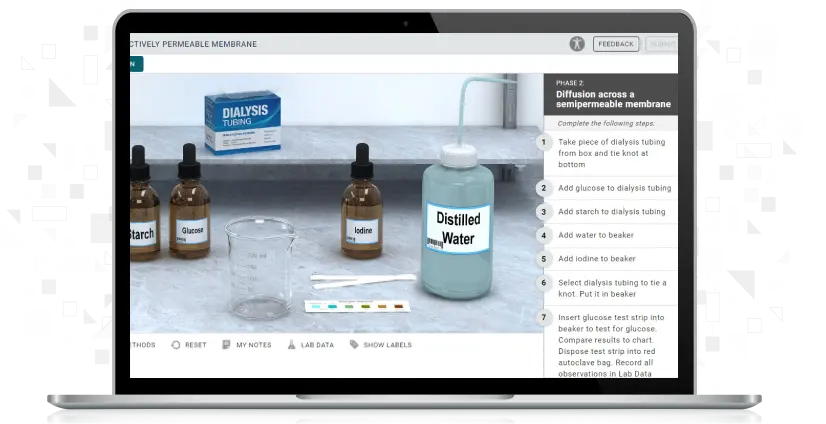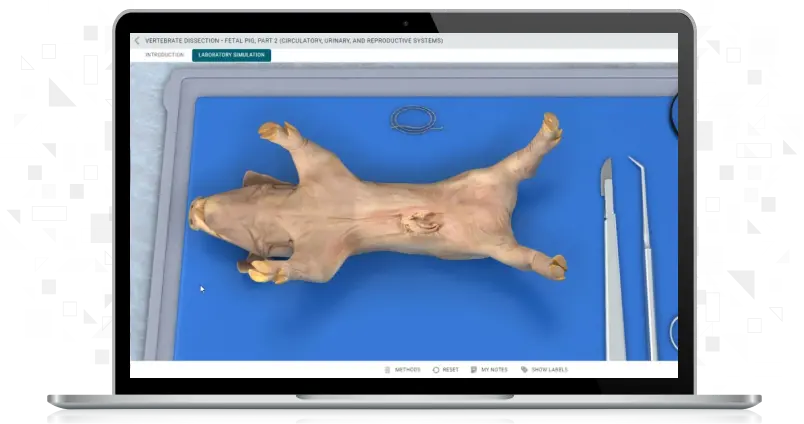My Account Details
Biology
Learn about the wonders of the world—from plants to animals and humans. Investigate the fascinating topic of biology through a modern laboratory experience. Our labs are suitable for non-majors, mixed majors, and majors biology students.

Featured Simulations for Biology

Applying the Scientific Method: Pillbug Preference , Link will open in a new window
In this simulation, you will use the steps of the scientific method to design a controlled experiment to determine if pillbugs prefer sand or cornstarch.

Diffusion Across a Selectively Permeable Membrane , Link will open in a new window
In this simulation, you will examine the diffusion of iodine, starch, and glucose across an artificial membrane made of dialysis tubing.

Dissection (Vertebrate): Fetal Pig part 1 , Link will open in a new window
In this two-part simulation, you will review anatomical positions, dissect the ventral body wall to expose and identify glands and organs associated with the digestive, respiratory, endocrine, circulatory, urinary, and reproductive systems.
See the growing list of Biology simulations here:
1st Lab Tutorial:
Applying the Scientific Method:
Bacterial Genetics:
• Polymerase Chain Reaction (PCR)
Basic Chemistry:
• Synthesis of Calcium Carbonate
Blood:
• Differential White Blood Cell Count
Cardiovascular Physiology:
Cell Division:
Cell Structure:
• Examining Plant & Animal Cells
• Prokaryotic and Eukaryotic Cell Size, Shape, and Function
Cellular Respiration:
• Measuring Energy Production in Plants
Chemical Composition of Cells:
Control of Microbial Growth:
• Effect of Antiseptics and Disinfectants
• Antimicrobial Sensitivity Testing (Kirby-Bauer Method)
Diffusion:
• Effect of Concentration on the Rate of Diffusion in a Semisolid
• Effect of Density of Media on the Rate of Diffusion
• Effect of Molecular Weight on the Rate of Diffusion in Air
• Diffusion Across a Selectively Permeable Membrane
Digestive System:
Dissections:
DNA Biology and Technology:
• Enzyme-Linked Immunosorbent Assay (ELISA) Testing (New)
• Transcription, Translation, and Mutation
Electromyography:
Endocrine System:
• Influence of Thyroid Hormone on Temperature Regulation
• Effects of Blood Glucose Level
• Water Quality
Evidence of Evolution:
• Fossils and Comparative Anatomy
Eye and Vision:
How Enzymes Work:
Human Genetics:
• Chromosomal Inheritance During Meiosis
Isolation Methods:
• Quadrant Streak Plate Method
• Quantitative Dilution of Bacteria
• Quantification by Colony Counting
Lab Safety:
Mendelian Genetics:
Metric Measurement:
Microbial Growth:
• Oxygen Requirements & Anaerobic Jar
Microscopy:
• Operation of a Brightfield Microscope
• Plant Cells (Onion Epidermal Cells)
Natural Selection:
• Antibiotic-Resistant Bacteria
• Natural Selection in Insects
Nervous System:
• Demonstrate Monosynaptic Reflexes
Organismal Diversity:
• Flatworms, Rotifers and Water Bears
Osmosis:
• Movement of Water Across a Selectively Permeable Membrane
pH Balance:
Photosynthesis:
• Comparing Green and Blue Light
• Determining Rate in White Light
• Monitoring Photosynthesis with Carbon Dioxide Uptake
Plants:
• Gravitropism and Phototropism (Mustard Plant Seedlings)
Population Biology:
Respiratory System:
Skeletal Muscle:
• Shoulder & Elbow Movement Exercise
• Collecting a Sputum Specimen
Spectrophotometry:
• Apply Beer's Law to Determine Concentration of Dye
Staining:
Transgenic Organisms:
Ubiquity of Microorganisms:
Unknown Bacterial Identification:
Urinary System:
